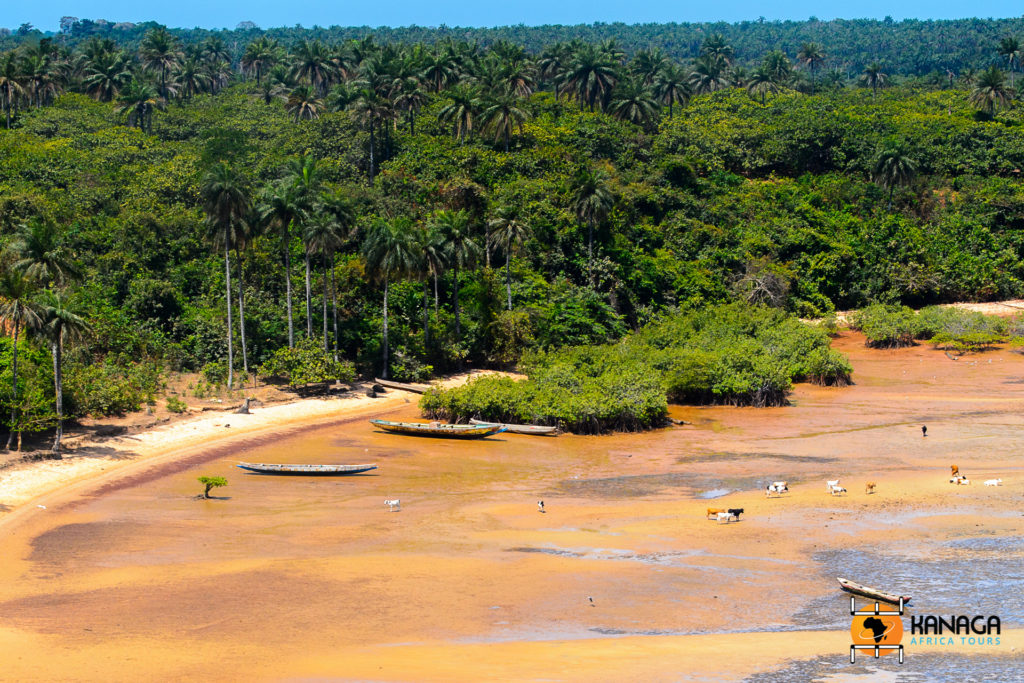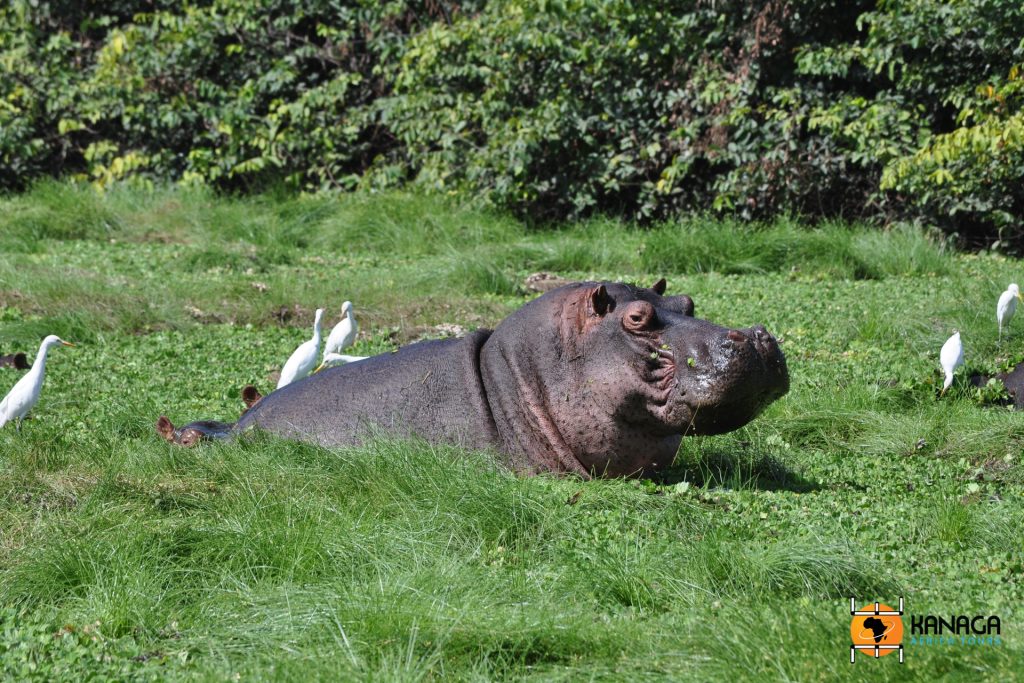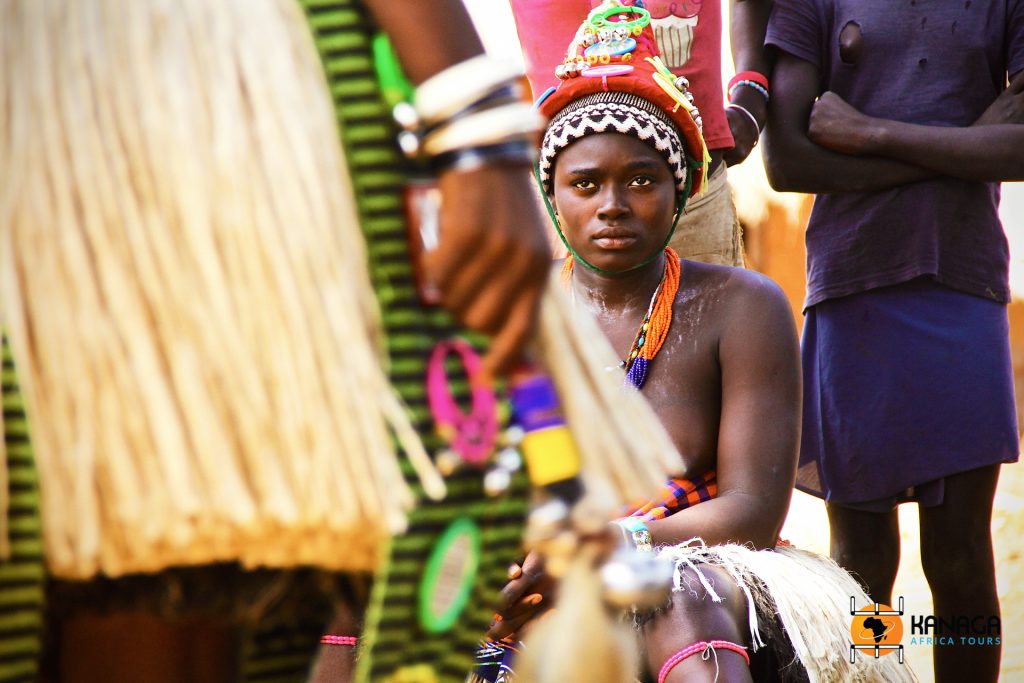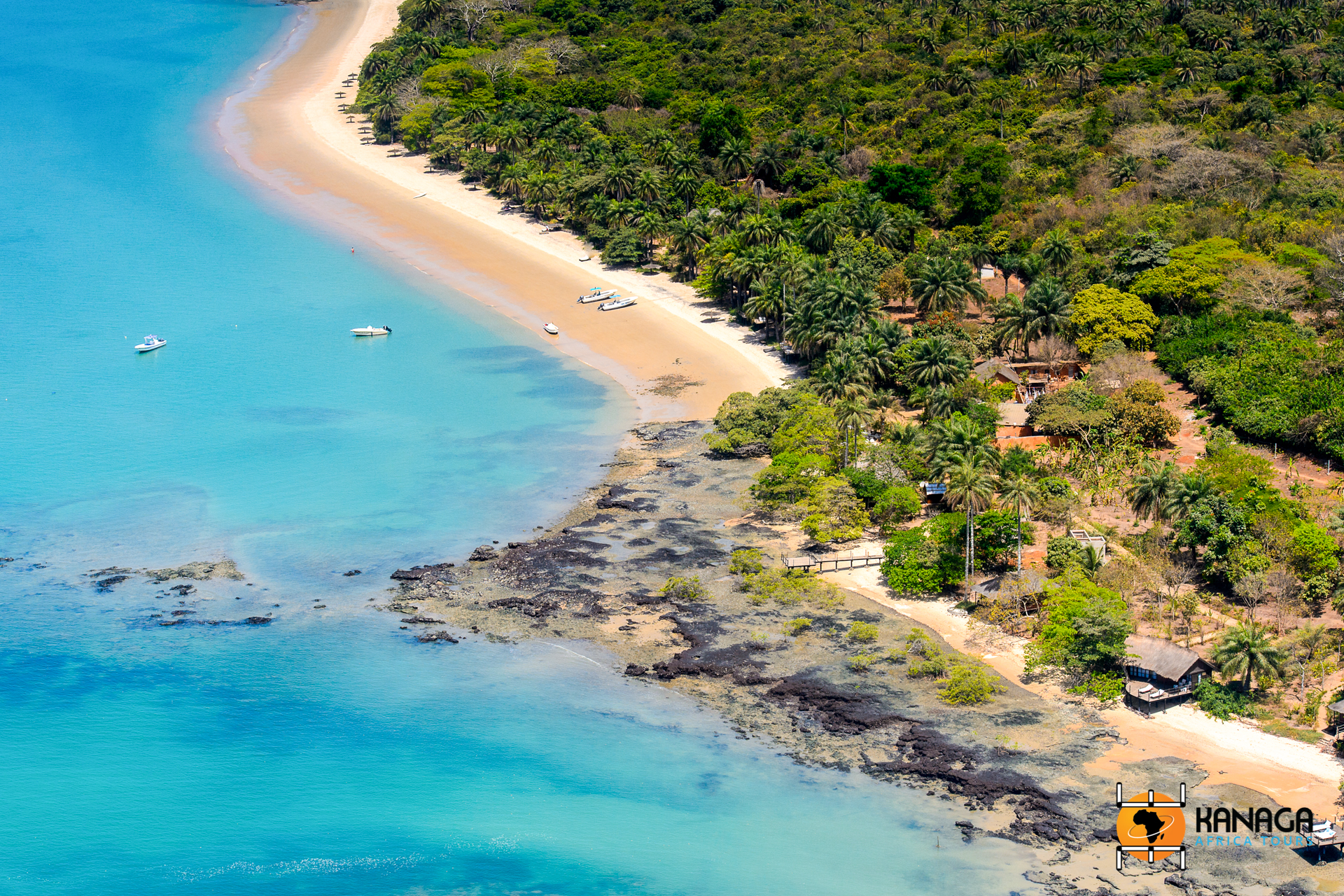Called West African Polynesia, this naturalistic jewel of the biosphere includes 88 islands off the coast of Guinea Bissau, of which just about twenty are inhabited by a population that lives still according to traditions and in symbiosis with nature.
If Bubaque is the current capital (with Bolama it was in the past for the whole of Guinea Bissau in colonial times), islands such as Joa Vieira, Canhabaque (also called Roxa), Rubane, Soga and Orango, have remained incredibly wild.
Stretches of heavenly beaches, intricate mangrove labyrinths, desolate expanses of lagoon, or lush forest hinterlands, these islands still offer pristine habitats for manatees, hippos, sea turtles, monkeys and numerous bird species. Here, in some isolated villages live the bijagos, an ancient people of farmers with complex spirituality and ancestral rites, whose social order is still governed by traditional matrilineal hierarchies, which entrust power to queens and priestesses.
Therefore, before reaching the wild clearing inside the island of Orangutan, inhabited by the rare sea hippos, is to pay tribute to the Mausoleum of Queen Okinka Pampa, a stoic heroine who led the insular people to resistance against the Portuguese colonial army. Exciting will be to meet the welcoming population of Canhabaque, dedicated to the artisanal pressing of red palm oil or collecting shellfish on the spectacular beaches that surround the island. It will be instructive to dwell on the customs and traditions of the small villages in the hinterland of the Island of Bubaque, before reaching the incredible Bruce beach, or again, meeting the king and queen of the small village of Soga.
An experience in the name of nature and traditions that is unlikely to be forgotten.







